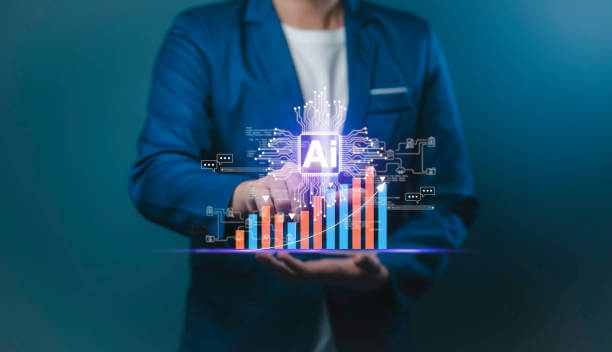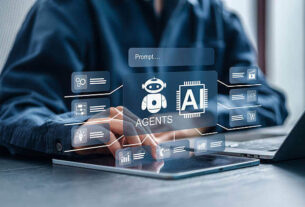Introduction
In nowadays’s facts-pushed global, agencies not rely upon guesswork to make essential selections. With big amounts of data generated daily, groups are turning to predictive analytics to find patterns, expect tendencies, and make smarter actions. by means of leveraging artificial intelligence (AI), predictive analytics answers have end up greater accurate, scalable, and effective—empowering businesses to live beforehand of competition, optimize operations, and reap sustainable boom.
This article explores how AI-powered predictive analytics works, its key advantages for corporations, actual-world programs, and why it has come to be a cornerstone for contemporary business boom strategies.
What is Predictive Analytics?
Predictive analytics is using information, statistical algorithms, and system studying techniques to pick out the chance of destiny effects based on historical information. in contrast to conventional analytics that makes a speciality of describing beyond performance, predictive analytics is going a step in addition to forecast what ought to show up next.
When mixed with AI, predictive analytics not best tactics tremendous records sets but also learns continuously, making predictions extra correct over time. This allows agencies to make proactive selections instead of reactive ones.
Why AI is Transforming Predictive Analytics
Synthetic intelligence adds a brand new size to predictive analytics by means of:
- Automating Data Processing: AI can take care of thousands and thousands of facts factors in actual time, some thing humans or conventional techniques can’t achieve.
- Enhancing Accuracy: Device learning algorithms enhance as they method greater facts, main to increasingly more unique predictions.
- Enabling Personalization: AI-powered predictive analytics can tailor insights for exclusive purchaser segments or enterprise operations.
- Scaling Effortlessly: From small startups to global companies, AI fashions can scale to fulfill commercial enterprise needs.
By means of combining superior AI models with predictive analytics, organizations can free up insights that were formerly hidden or impossible to discover.
Read More: AI PDF Summarizer: Speed Up Your Reading Process
Key Benefits of Predictive Analytics for Businesses
1. Smarter Decision-Making
Organizations geared up with predictive analytics can base selections on data-driven insights as opposed to instinct. as an example, a retail chain can forecast product demand during holiday seasons and stock inventory thus, minimizing losses.
2. Improved Customer Retention
Predictive models can examine client behavior to pick out signs of churn. organizations can then take preventive actions—like presenting reductions or customized messages—to maintain precious customers.
3. Operational Efficiency
Predictive analytics streamlines supply chains by using predicting delays, demand fluctuations, or gadget screw ups. producers, for instance, use predictive protection fashions to keep away from steeply-priced downtime.
4. Increased Revenue Growth
By forecasting developments, businesses can discover new possibilities for cross-selling, upselling, or getting into untapped markets. This proactive technique directly contributes to sales boom.
5. Risk Management
Financial institutions leverage predictive analytics to locate fraudulent transactions or check credit risks. This helps shield both companies and customers.
Real-World Applications of Predictive Analytics
Retail and E-commerce
E-trade giants use predictive analytics to advise merchandise based on surfing history, past purchases, and seasonal developments. This not only boosts sales however also improves client satisfaction.
Healthcare
Hospitals and clinics follow predictive analytics to anticipate patient readmissions, track disease outbreaks, and optimize treatment plans. AI-powered fashions are also revolutionizing personalized remedy.
Banking and Finance
Banks rent predictive analytics for credit score scoring, fraud detection, and funding forecasting. AI-pushed fashions lessen economic dangers whilst improving purchaser accept as true with.
Marketing and Sales
Entrepreneurs can expect which leads are maximum possibly to convert, optimize campaign timing, and customise promotions. This guarantees advertising budgets are spent efficiently.
Manufacturing
Predictive upkeep reduces downtime by means of forecasting while machinery is probable to fail. this saves tens of millions in restore charges and continues production on course.
Steps to Implement Predictive Analytics in Business
Step 1: Define Clear Objectives
Agencies need to begin by way of figuring out the problem they want to clear up—whether it’s lowering churn, enhancing income forecasts, or minimizing risks.
Step 2: Collect and Organize Data
Applicable data is the foundation of predictive analytics. companies must accumulate established and unstructured statistics from multiple assets.
Step 3: Choose the Right Tools and Platforms
AI-powered structures like IBM Watson, SAS, or custom-built answers help companies procedure and examine information efficiently.
Step 4: Build and Train Predictive Models
System studying algorithms are educated on ancient data to apprehend patterns and predict destiny outcomes.
Step 5: Monitor and Improve
Predictive analytics is not a one-time project. agencies need to continuously reveal performance and retrain fashions for accuracy.
Read More: Exploring the Synergy of Magento and ChatGPT in E-Commerce
Challenges in Predictive Analytics
While the blessings are clean, groups frequently face challenges:
- Data Quality Issues: Terrible or incomplete statistics can cause faulty predictions.
- High Implementation Costs: Setting up AI-powered systems requires funding in era and understanding.
- Privacy Concerns: Agencies have to make certain compliance with statistics safety policies even as the usage of customer facts.
- Change Management: Personnel may face up to adopting new, information-pushed decision-making tactics.
Overcoming those challenges calls for right making plans, skilled specialists, and strong statistics governance guidelines.
Future of Predictive Analytics
The destiny of predictive analytics seems promising as AI evolves. advancements in herbal language processing (NLP), deep learning, and real-time analytics will make predictions even extra correct. furthermore, as businesses combine predictive analytics with internet of factors (IoT) devices, they’ll benefit deeper insights into operations and client behavior.
Within the coming years, predictive analytics will shift from being a aggressive gain to a commercial enterprise necessity.
Conclusion
AI-powered predictive analytics is now not a futuristic concept—it is a gift-day necessity for agencies aiming to grow in aggressive markets. From improving selection-making and optimizing operations to improving client enjoy and lowering risks, predictive analytics affords endless opportunities for commercial enterprise boom. organizations that spend money on AI-driven predictive analytics nowadays are not best getting ready for future challenges however also positioning themselves as leaders of their industries.



